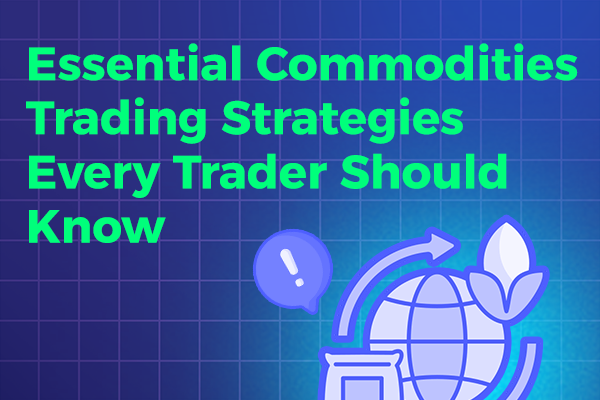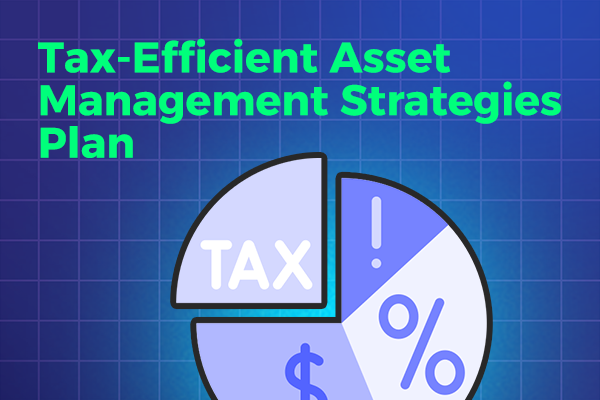Welcome to the world of essential commodities trading strategies! Whether you’re a beginner looking to dip your toes into the exciting world of trading or an experienced trader seeking to enhance your skills, this guide is designed to provide you with the essential knowledge you need to succeed.
Trading in essential commodities, such as oil, gold, and agricultural products, can be highly lucrative, but it also requires a deep understanding of the market dynamics and effective strategies.
In this comprehensive guide, we will walk you through the fundamental concepts, advanced techniques, and expert tips that will help you navigate the complexities of essential commodities trading. From analyzing market trends to managing risk, we will cover it all, equipping you with the tools necessary to make informed trading decisions.
So, whether you are a novice or a seasoned pro, get ready to elevate your trading game and unlock the potential for substantial profits with our guide to essential commodities trading strategies.
Understanding commodities trading
Commodities trading involves buying and selling physical goods, such as oil, gold, and agricultural products, on the financial markets. Unlike stocks and bonds, commodities are tangible assets that can be traded. The commodities market is highly volatile, influenced by factors such as supply and demand, geopolitical events, and economic trends.
To become a successful commodities trader, it’s important to understand the fundamentals of how the market works. This includes learning about the different types of commodities, their pricing mechanisms, and the factors that can impact their value. By gaining a solid understanding of the commodities market, you will be better equipped to develop effective trading strategies.
The importance of having a trading strategy
Having a well-defined trading strategy is crucial for success in commodities trading. A trading strategy is a set of rules and guidelines that dictate when and how you will enter and exit trades. It helps you stay disciplined and avoid making impulsive decisions based on emotions.
A trading strategy should be tailored to your individual goals, risk tolerance, and trading style. It should outline your entry and exit criteria, as well as your risk management techniques. By having a clear plan in place, you can minimize the impact of market fluctuations and increase your chances of making profitable trades.
Unlock Wealth: Sign Up Now for Smart Investing Success
Key factors to consider when developing a commodities trading strategy
When developing a commodities trading strategy, there are several key factors to consider. First, you need to determine your trading goals and objectives. Are you looking to make short-term gains or are you in it for the long haul? Understanding your goals will help you choose the right trading approach.
Next, you need to consider your risk tolerance. Commodities trading can be highly volatile, so it’s important to assess how much risk you are willing to take on. This will help you determine your position size and set appropriate stop-loss levels.
Additionally, you should analyze market trends and identify potential trading opportunities. This involves conducting technical and fundamental analysis to assess the current and future market conditions. Technical analysis focuses on historical price data and indicators, while fundamental analysis examines economic factors and news events.
Different types of commodities trading strategies
There are various types of commodities trading strategies that traders can employ, depending on their goals and risk appetite. Some common strategies include trend following, mean reversion, and breakout trading.
Trend following strategies involve identifying and following the dominant market trend. Traders using this strategy aim to profit from sustained price movements in a particular direction. Mean reversion strategies, on the other hand, involve identifying overbought or oversold conditions and expecting prices to revert to their mean values.
Breakout trading strategies focus on identifying key support and resistance levels and entering trades when prices break out of these levels. This strategy aims to capture the momentum that follows a breakout.
It’s important to note that there is no one-size-fits-all strategy in commodities trading. Traders should experiment with different strategies and adapt them to their individual trading styles and market conditions.
Technical analysis in commodities trading
Technical analysis is a widely used approach in commodities trading. It involves analyzing historical price data and using various indicators to identify patterns and trends. The goal of technical analysis is to predict future price movements based on past performance.
There are several technical indicators that traders use in commodities trading, such as moving averages, oscillators, and trend lines. These indicators can help identify entry and exit points, as well as potential support and resistance levels.
It’s important to note that technical analysis is not foolproof and should be used in conjunction with other forms of analysis. Traders should also be aware of the limitations of technical analysis and the potential for false signals.
Fundamental analysis in commodities trading
Fundamental analysis is another important approach in commodities trading. It involves analyzing economic factors, supply and demand dynamics, and geopolitical events to assess the intrinsic value of a commodity.
Traders using fundamental analysis look at factors such as production levels, inventories, consumption patterns, and government policies that can impact the price of a commodity. By understanding the fundamental factors driving supply and demand, traders can make informed trading decisions.
Fundamental analysis requires staying up to date with news and economic data that can impact the commodities market. Traders should also be aware of the interconnections between different commodities and how changes in one commodity can affect others.
Risk management techniques for commodities trading
Risk management is a critical aspect of commodities trading. The commodities market can be highly volatile, and it’s important to protect your capital from significant losses. Here are some risk management techniques that traders can employ:
1. Setting stop-loss orders: A stop-loss order is a predetermined price level at which you will exit a trade to limit your losses. By setting stop-loss orders, you can protect yourself from excessive losses if the market moves against you.
2. Diversification: Diversifying your portfolio by trading multiple commodities can help spread your risk. By investing in different commodities with varying price dynamics, you can reduce the impact of a single commodity’s performance on your overall portfolio.
3. Position sizing: Determining the appropriate position size for each trade is essential for risk management. Position sizing involves calculating the number of contracts or shares to trade based on your risk tolerance and the size of your trading account.
4. Risk-reward ratio: Evaluating the risk-reward ratio of each trade can help you assess the potential profitability and the amount of risk you are taking on. A favorable risk-reward ratio means that the potential reward outweighs the potential risk.
Backtesting and refining your trading strategy
Once you have developed a trading strategy, it’s important to backtest it to assess its performance. Backtesting involves applying your strategy to historical market data to see how it would have performed in the past. This can help you identify any flaws or weaknesses in your strategy and make necessary adjustments.
Backtesting can be done manually or using automated trading software. It’s important to use a sufficient amount of historical data to ensure the accuracy of your results. By backtesting and refining your trading strategy, you can increase its effectiveness and improve your overall trading performance.
Tips for successful commodities trading
Here are some additional tips to enhance your success in commodities trading:
1. Stay informed: Keep up to date with the latest news and developments in the commodities market. Economic data, geopolitical events, and weather patterns can all impact commodity prices.
2. Practice risk management: Always prioritize risk management and protect your capital. Don’t risk more than you can afford to lose, and use stop-loss orders to limit your losses.
3. Keep emotions in check: Trading can be emotionally challenging, but it’s important to remain disciplined and avoid making impulsive decisions based on fear or greed. Stick to your trading plan and avoid chasing losses.
4. Learn from your mistakes: Trading is a continuous learning process. Analyze your trades, identify your mistakes, and learn from them. Continuous improvement is key to long-term success.
5. Seek education and mentorship: There are plenty of resources available to help you improve your trading skills. Consider taking courses, attending webinars, or finding a mentor who can guide you.
Resources for further education and development in commodities trading
If you’re looking to further enhance your knowledge and skills in commodities trading, here are some resources worth exploring:
1. Books: There are numerous books on commodities trading that cover various strategies, techniques, and market dynamics. Some recommended titles include “A Beginner’s Guide to the Commodities Market” by Matthew Driver and “Commodity Trading Manual” by the Chicago Mercantile Exchange.
2. Online courses: Many online platforms offer courses specifically tailored to commodities trading. These courses cover a wide range of topics, from basic concepts to advanced strategies. Some popular platforms include Coursera, Udemy, and Investopedia.
3. Webinars and seminars: Participating in webinars and seminars can provide valuable insights and allow you to learn from industry experts. Keep an eye out for upcoming events and workshops in your area or online.
4. Trading simulators: Practice trading without risking real money by using trading simulators. These platforms allow you to simulate real market conditions and test your strategies in a risk-free environment. Some popular simulators include MetaTrader 4 and TradingView.
Conclusion
Commodities trading can offer exciting opportunities for traders to profit from the global markets. However, it requires a solid understanding of market dynamics, effective trading strategies, and risk management techniques. By following the essential commodities trading strategies outlined in this guide and continuously improving your skills, you can navigate the complexities of the market and unlock the potential for substantial profits. Whether you’re a beginner or an experienced trader, remember to stay disciplined, manage your risks, and always seek further education to enhance your trading abilities. Happy trading!




